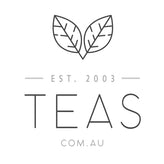Tea vocab
Posted by BEV A

Bakey: Characteristic of an overfired black tea from which too much moisture has been removed.
Biscuity: A pleasant aroma often used to describe quality Assams.
Bright: A characterisitc associated with good colour, generally a signature characteristic of quality tea.
Brisk: Denotes a ‘live’ quality associated with pungency of the tea – a characteristic often found in good quality, well-manufactured tea.
Common: A plain, thin liquor that has no distinct flavour characteristics.
Dull: Refers to the liquid’s colour, the opposite of bright. A dull tea produces a cloudy brew. May also denote lack of briskness. Tea that has been storage for too long can result in dull brew.
Flat: Applies to tea that is no longer fresh, tastes like it sounds.
First Flush: (The quality of the tea depends on the time brewed and the time of the year it is picked.) First Flush refers to the first picking season of the year. Typically around March. First Flush Indian tea typically has a rich and fresh aroma. The flush might have a marginal green tint.
Full: Describes a good combination of colour and a round, smooth mouthfeel.
Hard: Pungent liquor related to greeness, accompanied by a harsh, bitter or rasping quality.
Harsh: Describes a tea that has been underwithered, resulting in a very rough liquor.
Heavy: A thick, strong and darkly coloured liquor with little life of briskness.
Light: Liquor that has little colour and strength. Often this kind of tea has little aroma as well.
Malty: A desirable quality commonly found in Assam teas.
Metallic: A sharp, coppery flavour found in some black teas.
Muscat: A flavour and aroma characteristic of fine darjeeling’s, often associated with black currants.
Pungent: A bitter, harsh and rough characteristic that is felt along the gums rather than tasted on the tongue.
Second Flush: (The quality of the tea depends on the time brewed and the time of the year it is picked.) Second Flush refers to the second picking season of the year. Typically around May/June. Second Flush tea tends to be a little sweeter and smoother than First Flush tea.
Smoky: A charcteristic (flavour and aroma) of some Chinese teas such as Lapsang.
Stale: Faded aroma and a dead taste caused by excessive aging and subsequent loss of quality.
Thin: Light liquor that lacks strength in flavour or aroma (often both).
Tippy: A characteristic often found in better second flush tea. Tippy refers to the golden tips appearing on black leaves. These golden tips tend to lessen the astringency (bitterness) of the tea, hence, producing a sweeter and smoother infusion.
Tisane: [ti?zan] is the herbal or fruit infusion that does not contain tea leaves from the Camelia Sinensis plant. Examples of tisane are Turkish apple tea, chamomile, Rooibos (organic) and Sweet Dreams.
Toasty: Describes that aroma of a fine Keemun and other fired teas.
Weedy: Grassy or haylike taste – related to underwithering. It is also referred as woody taste.
Winy: Relates to the aging of tea, which normally does not enhance flavour. However, for some fine tea such as Keemun, Darjeeling and Pu’erh, aging can bring out an interesting mellow flavour.
SHARE:

AUSTRALIA'S FINEST LOOSE LEAF TEAS
Explore Australia's largest selection of Premium Teas & All-Natural Organic Herbal Blends.

